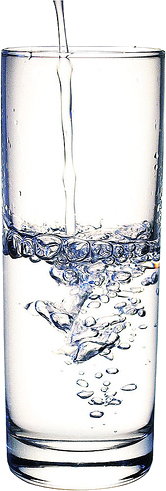2012 October
About Andrew Cusack
 Writer, web designer, etc.; born in New York; educated in Argentina, Scotland, and South Africa; now based in London.
Writer, web designer, etc.; born in New York; educated in Argentina, Scotland, and South Africa; now based in London. read more
News
Blogs
Reviews & Periodicals
Arts & Design
World
France
Mitteleuropa
Knickerbockers
Argentina
The Levant
Africa
Cape of Good Hope
Netherlands
Scandinavia
Québec
India
Muscovy
Germany
Academica
The Lady in Red
Or: Where to sit in church on Sunday
IT IS A LOGICAL TRUISM that good habits are good. But good habits — well and fine as they are — can also produce ancillary habits that, while not ‘bad’, might perhaps also be worth denying the dignified title of ‘good’; they are ammoral rather than immoral. Hearing mass on Sunday is a good habit — indeed it is an obligatory good habit binding upon all the Faithful. Some people express their habit of Sunday mass at varying locations — an attitude which I find surprising, which itself is surprising given until very recently I varied my Sunday mass locale myself.
In New York, it was easy: there was only one real place to hear Mass and that was the Church of St Agnes on 43rd Street. Of course, some dangerous rapscallions dissented from this point de vue and attend the Church of Our Saviour on Park Avenue. I remember one Sunday on Lexington Avenue seeing the group of lads who serve the 11 o’clock mass at St Agnes come down the avenue while the like gang who did the same at the Church of Our Saviour were coming up it on the same side and it was like seeing the Sharks and the Jets meet in “West Side Story”.
In London, I used to go here and there; mostly dividing my Sundays between the Oratory and the Cathedral but every now and then sneaking in Holy Redeemer in Chelsea. But for a year or so, I have been an Oratory regular, and now look strangely upon those who, when the insouciant inquiry at a dinner party or over drinks or such is made “Where do you go to Mass?”, reply “Oh, you know, sometimes here, sometimes there, sometimes I even go to the local parish.” (I never believe the last assertation; I, for one, have only been to my local parish twice: once this past St Patrick’s Day to pray, in vain, for an Irish victory at Twickenham, and lastly on one of those lesser-remembered Holy Days of Obligation.)
But the ancillary (ammoral) habit to the (moral) habit of hearing mass on a Sunday is the custom of sitting in the same place. If one is new to a particular church, one can sit here and there for quite some time, but eventually you find a bit of the church and you realise one Sunday “Ah! This is just right!” and from that day forth you have “your” seat. The chaps who do the collection obviously must have their proper places. The one-legged lady in the wheelchair who shouts at people has her usual spot. A certain sturdy Knight of Malta enjoys sitting in more or less the same location every Sunday, and one friend of mine inexplicably likes sitting in the middle of the row towards the middle of the first section of seats beneath the dome. Inexplicable to me because I cannot abide having to climb over people to get to and fro at mass.
Anyhow, needless to say, I have my preferred seat at the Oratory on a Sunday. It is not even a neighbourhood of seats, or a small vicinity, it is a specific seat and I am loathe not to have it. This is because it is at the confluence of the various important factors. It is not so close to the front that you are mistaken for the religious fanatic, the overly pious, or Princess Michael of Kent. Yet it is not so far to the back that you have to walk a mile to receive Our Lord in the Most Holy Sacrament of the Altar come communion time. (And have you ever sat towards the back at the Oratory? Barely anyone says the responses! The Fathers should set up a specific mission towards the last twenty-odd pews at the 11:00 on a Sunday — I suspect they are unbaptised the lot of them).
Furthermore, there is a duality to the mode of seating at the Oratory: the first two sections, comprising about the first third of the church, are actual seats, whereas the last section is composed of hard, uncomfortable wooden pews. (Perhaps they don’t say the responses because they’re embittered by discomfort?). Also, I dislike being in between the pulpit and the sanctuary, thus necessitating that you have your back turned to the priest when time comes for him to preach. And I prefer to nip up to communion rather swiftly, so I can return and get all my prayers in and not spend half the time standing in a queue awkwardly awaiting the reception of the Eucharist. This, therefore, necessitates that I be directly on the aisle.
“My” seat — I will not reveal its specific location within the Oratory Church of the Immaculate Heart of Mary, Brompton, for the obvious reason of inviting competitors — “My” seat is thus located in precisely the perfect location. Needless to say, I’m used to the others who have found that “their” seat is adjacent or nearby (though I’m glad that one chap who objects to dogs being at mass has given up and gone elsewhere). I feel we all implictly know and understand each other without actually intercommunicating, in that way that researchers who frequent the same stacks in university libraries feel a certain affinity.
About a month ago, we received a new regular to our midst: a white-haired lady in what might be described as late middle age, hebdomidally clothed in a red overcoat. She began to take the seat next to mine. Very well. Pas de problème, etc. Then one Sunday, a slow-moving Italian family attending the previous mass were lingering in “our” row and both she and I assumed positions ready to take possession of our regular seats. Imagine my surprise, then, when the Lady in Red, in full knowledge of my presence, took my seat! Friends were in from the country that week and said they watched the entire scene in detached amusement from the other side of the church. Needless to say, I was reduced to taking the next seat over, usually the Lady in Red’s seat.
What did this fresh assault upon my dignity betoken? I knew not. But I was determined that, in the immortal words of an American president, this aggression would not stand. The next Sunday I made sure to arrive extra early and secure my seat succesfully but untriumphantly. (Triumphalism is a tiresome bore in others and a poor reflection upon one’s self). The Sunday following that she appeared in pole position to usurp my place yet again, but then she didn’t: she let me have it. This, of course, was really a back-handed triumphalism. Haha! See! I shall be the better Christian and let you have the seat to which you have been accustomed since time immemorial! Look ye mighty upon my works and despair!
“Very well!,” I thought, “two can play at this game!” I was determined the Sunday following to arrive early and to deferentially allow her to have the place to which I had grown to know and love so well. But, friends, the best-laid schemes of mice and men gang aft agley. This past Sunday I arrived a mere minute or two before mass was to start, and thus I was forced to sit in the north transept instead. What’s worse, the Lady in Red wasn’t even sitting in my seat: she had ceded it to a mantilla’d Filipino lady.
This raises a fresh quandary. If this past Sunday was “my” week to defer to her, but I failed, and she deferred to someone else, does that then mean that I must defer next week, and the rotation begins anew? Or do we stick to the previous rotation of her week / my week? I know not, but I must be off now, as my French flatmates are wailing, and I suspect there may be a mouse for me to kill. Abientot!
London’s Fallen Water
A cursory investigation into the metropolis’s drinking water yields results that veer towards the somewhat disturbing
by ALEXANDER SHAW in London
UNDERSTANDING  enables self-preservation, but occasionally leads us out of Eden too. Thus, I’m not encouraging you to understand how London’s water is recycled, I’m merely tempting you to.
enables self-preservation, but occasionally leads us out of Eden too. Thus, I’m not encouraging you to understand how London’s water is recycled, I’m merely tempting you to.
Education is like lighting a fire, not filling a bucket. One realisation leads to another:
Q: What happens when the ice cubes melt in a brimming Tumbler of Scotch?
A: Nothing – so the disappearance of the polar icecap won’t raise sea levels. So I can drive an eight-litre Bentley after all.
Q: What happens when two cars each travelling at 30mph collide head on head?
A: The Bentley’s CD player skips a track and someone spends the afternoon picking a Nissan Micra out of the radiator.
Point by point, basic wisdom allows us to unpick the paranoid egalitarian ideas subversively presented by the Marxist GCSE Physics curriculum.
However, I am horrified that, even with my impeccable logic, it has taken me three years to realise that London’s recycled potable water supply harbours a rather dirty secret. It was the lime scale in the kettle which gave it away. We all know that, as with many cities, London recycles its water. But why, after the process of evaporation and recondensation, does limescale remain in the supply? The answer, to my unutterable horror, is that it is not recycled by evaporation.
I’ve given up trying to get straight answers from Thames Water about exactly what goes on. Like the pro-choice lobby and socialist economists, they gloss over all manner of sins with a vast lexicon of euphemisms.
For ‘carbonaceous waste,’ read: diarrhoearic faeces comprised of doner kebabs and salted French fries, crammed past cankerous lips by nail-bitten greasy fingers of obese female students in bus stops at 3am. For ‘nitrogenous waste,’ read: cheap lager, churned through proletarian digestive systems whose uncircumcised owners moan with relief as the steel urinal tangs of ammonia – gobs of chewing gum and Mayfair fag butts collecting at the foot of the drain. After a brief sifting and filtering, these ‘wastes’ then gush out of London showerheads. The final confluence of the city’s vomit is on my own pale, patrician flesh.
It might not disturb me so much if the water were sent back to the same house, or even the same postcode. At least in Chelsea, we would be drinking the urbane fruits of some anorexic supermodel’s colonic. But no, the city’s water is pooled in something called the ‘Thames Water Ring Main,’ which sounds ghastly, and is so huge that it reaches down to somewhere called ‘zone four.’
I have read an account of the process used to purify our sewage on Thames Water’s website. First they filter it ‘through a rake’ (right, OK), and then ‘most of the solids are removed by settlement.’ After that, they skim off the cleaner bit of what, by then, is basically an un-shaken-up shit smoothie and pump it through a gravel pit of bacteria. Then they send it back to my house.
The internet consensus seems to be that, on average, our tap water has gone round this system approximately seven times and, for those who still have diehard faith in the system, people start to feel nauseous when they drink 11th generation water. So yes, it does get muckier each time.
“Well, if we don’t get ill it must be alright,” a friend of mine concluded, taking a defiant swig of the tap water she’d just ordered in a café. It seems this may also be the underlying philosophy of Thames Water. I find it an unsettlingly laissez faire approach.
The U.S Geological Survey discovered that the dozens of trace chemicals – often derived from medication – which slip through modern filtration processes amount to ‘only a thimble full in an Olympic pool.’
Only!?! If that thimble were of blood, a shark would smell it. If it were Polonium 210, it would be enough to wipe out the entire city. And, heavens above, any folk who take homeopathy seriously will consider that sort of dilution the medical equivalent to downing a pint of dysentery or bathing in the cesspit of a Kinshasa prison.
Furthermore, the ‘fresh’ water that is brought in to our supply from the Thames contains the only-slightly-treated sewage of the settlements upstream. I’m going to guess that 95% of the female populations of Reading, Cowley, Slough and Swindon perform some type of medical injunction upon their reproductive system every Saturday (or Sunday morning, God forbid). And, of course, what goes in must come out.
A Drinking Water Inspectorate report submitted to Defra in 2007 proclaims that our UK filtration techniques ‘can result in removal rates of more than 90% for a wide variety of pharmaceuticals.’ Oh, good! Only less than 10% gets back in! Further down the report, we read: ‘Very limited data were available for the concentrations of pharmaceuticals or illegal drugs in UK drinking waters, but data from the rest of Europe and the USA have shown that concentrations in finished drinking water at treatment works are generally =100 ng.l-1’ (which sounds like another euphemism to me). The report continues to say that the filtration processes are ‘not specifically designed to remove pharmaceuticals and several compounds have been reported in finished drinking water.’
The report is available in summary here. I was retching and gagging by the third paragraph.
It comes as little surprise to me that our perverse society seems more preoccupied with the treatment of the ‘sludge’ which is siphoned out, than the ‘water’ which is pumped back in to our taps. The Thames Water reports abound with the ‘European Sludge Directive,’ the worthy ‘good chemical status,’ and not forgetting, of course, the all-important ‘Safe Sludge Matrix.’ I have already expounded upon the true meaning of ‘carbonaceous’ and ‘nitrogenous,’ so I will spare you my reflections on ‘sludge.’
In order for my water to be clean, it must be broken down to a molecular level, de-ionised, re-ionised, blessed by a bishop, and prayed over by a virgin.
However, I have identified two brands of bottled water which almost meet the standards which we must now demanded from natural sources: Tasmanian Rain ($11 a bottle), is captured from the ‘purest skies on earth,’ and doesn’t touch the ground before it gets to the bottle. Only problem is: what if a bunch of Aussies on stag-night fly a smoky old Cessna over the rain catchment facility? Perhaps better is 10 Thousand BC ($14 a bottle) – or the hippy’s dilemma, as I call it – because it’s extracted from a glacier and derives its purity from having been frozen since before the fall of man.
Or, of course, you could just give up drinking water, as I did years ago.
Search
Instagram: @andcusack
Click here for my Instagram photos.Most Recent Posts
- Burns Tower April 19, 2024
- Patrick in Parliament March 18, 2024
- Articles of Note: 13 March 2024 March 13, 2024
- Cambridge March 9, 2024
- Taken on Trust March 4, 2024
Most Recent Comments
Book Wishlist
Monthly Archives
Categories




